J & J mooring at the Promenade des Anglais, 2020
If you think that this cutout reminds you something, you are right. This is a variation on a very well-known tune, “view of the sea through the window” and the view is on the Promenade des Anglais, which is a main beach street in Nice, France. Since Nice and in general South-East of France became a preferred destination of impressionists after around 1905, many of them would land in Nice or nearby, rent a sea-view apartment, most likely at Hotel Beau Rivage at Promenade des Anglais, un-pack their valises, opened the window shutters, and cry “oh, quel vue magnifique ! ”. Matisse, who did not like the place at the first sight, because he arrived there in a cold winter and during the 1914 war with a shortage of anything, including something to heat his room, was anyway enchanted by the sea and painted almost 50 versions of the view. He wrote “From my open window you can see the top of a palm tree – white lace curtains – coat-rack on the left – armchair with white lace cover on the back – on the right a red table with my suitcase on it – sky and sea blue – blue – blue”- translation of citation from an essay by Gerry (https://gerryco23.wordpress.com/2013/10/01/matisse-in-nice-through-an-open-window/). Out of these 50 I show below just 3 of them, having boats as a prerequisite. There is Matisse Museum in Nice, dominated by his later paintings, some of the views of the sea from a window.
The genius Matisse was a leading spirit in the “sea through the window” activity, but for sure not the only one.
Either independently attracted to the subject, or just copy-catting, there are several notable painters of the view of the sea through a window. Max Beckman was one, with his recognizable heavy black paint drawing, and the one I could not recognize at first sight, of Edvard Munch, with a view from the opposite side (West). Mind, the Promenade is almost 6 kilometers long. It’s a sun bathed embankment with some small boats pulled out of water and some promenading vacationers, and bathers in a distance. Pleasant, relaxing view. Not the real Munch, dark and dramatic.
The one who actually attracted me to the subject was Raoul Dufy (1877 -1953), a Fauvist, whose style is lighter, and more airy and delicate than Matisse’s. He painted number of views of the sea from the window in Nice. There is more of the outside in his paintings than in Matisse’s, and this is maybe why I like it more. His views are more directed toward the town and the Promenade des Anglais, which I remember from my visits in 1968, 1976, and later. For some reason that angle is my preferred. I enclose 4 of his paintings. He has tried this view alone several times (mainly in 1928), without and with the interior itself, even the latter one in several versions. My preference is with the curved view of the Promenade (Dufy preferred that too, seems, as he used that already in his early view in Le Havre), but with the elements of the interior.
P.P. (1958) La baie de Cannes
Dufy has been earning his living as a printed textile designer. Such textiles, which practically are printed wood block cutouts enjoy my sympathy, as I consider them as cousins of my type of cut-outs. By force of the material and the technique of the cut out, my picture cannot be too detailed. You need to render your feel of the place or situation or a pattern with a relatively few cuts, and that’s it. This is how I like it and see the things. A sort of expressionist cut-out. Interestingly, one of a few landscapes that Picasso (must have hated landscapes) produced (here from Cannes, 1959) has something in it of a cut-out, to me.
Funny thing, when I was preparing the sketch of this cut-out, a few days earlier I reviewed again all the paintings on the subject I had in my data base and let them sink in my memory for some time, and then would draw my sketch. To my surprise all these views blended in one, certainly not a realistic one, much less a specific one, as I haven’t been to the place since probably 2004. What comes out is anyway a relatively busy, a bit messy composition. Well, this is how I have it. My office looks like that, my studio as well, and so my walls with the pictures if I am allowed to hang them my way. I am not a minimalist, nor a rigorist. By far. If you are curious how a minimalist would do it, see the sea view, La fenêtre a La Goulette, painted by Albert Marquet (1926). He was a curios fellow, a close (younger) friend with Matisse considered a second sort of a Fauvist, shown much, much less often (a pity). I was lucky to see his exhibition about a few years ago in The Musée d’Art Modern of Paris.
In my cut out I followed the arrangement used by both Matisse and Dufy, who have shown both the interior of their room and as much as I could of the sea. The reason is to show boats, in particular one with my daughter who took recently to boating with her husband, and the picture is meant to commemorate this passa-tempo of theirs.
As previously, in Rufus Day-dreaming of last year, I was confronted with a need of representing water through a cut-out. Not that simple. Here, more than previously, I tried to use patterns in water to render water in motion, even if these waves are clearly not to scale (neither are the boats).In a sense, I was inspired by the water depiction of David Hockney, whose art, and in this case scenes of swimming pools, I love. They are so airy, clean, almost transparent. His waves, while not exactly the sea waves, are the swimming pool creatures generated by reflection of mini wave crests generated at the swimming pool edges, illuminated by the sunshine playing with their shadows at the bottom. Fantastic! He even painted them bold at the bottoms of the swimming pools.
My waves became more round, and by force of a cut out interconnected, almost an art nouveau. Taken by enthusiasm I expanded their form to the draperies to the side and over the top of the window. I love art nouveau!

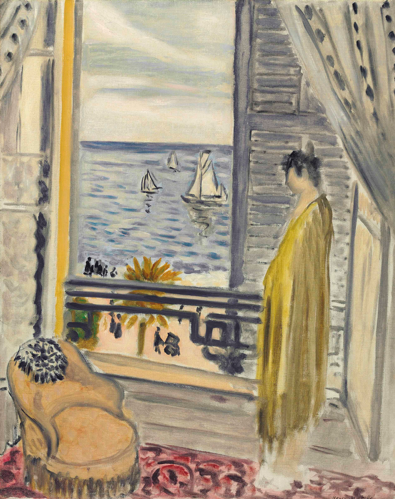
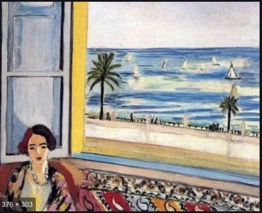
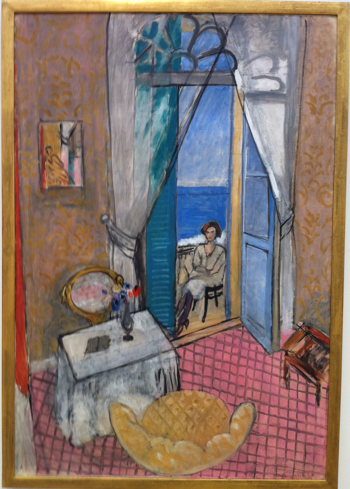
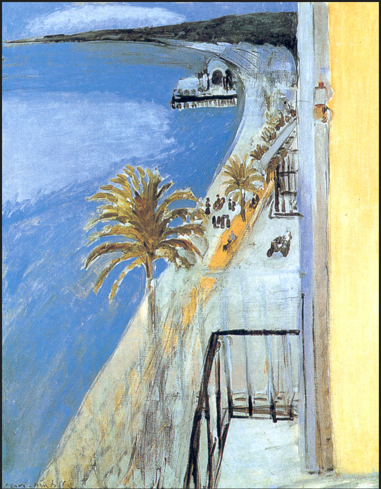
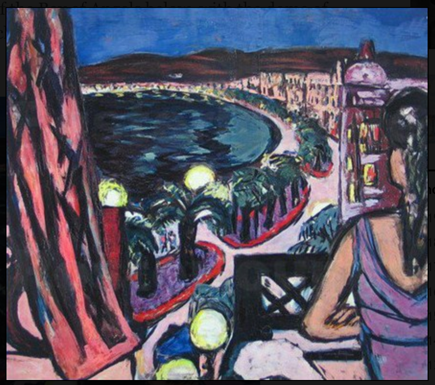
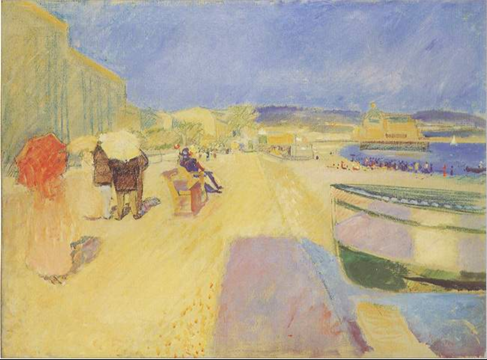
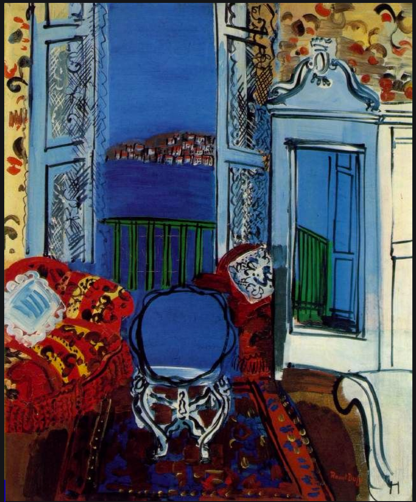
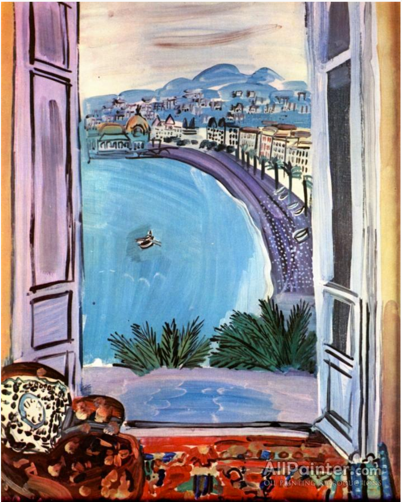
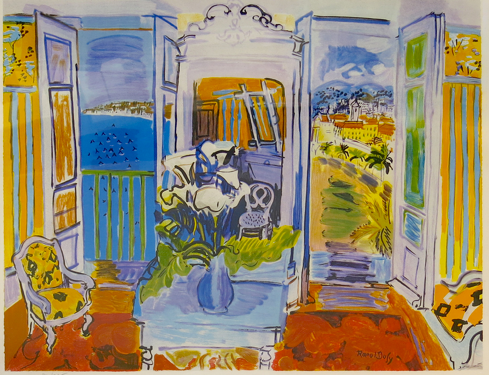
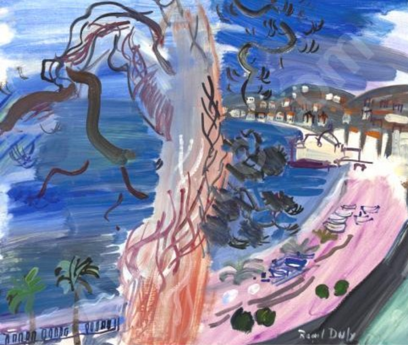
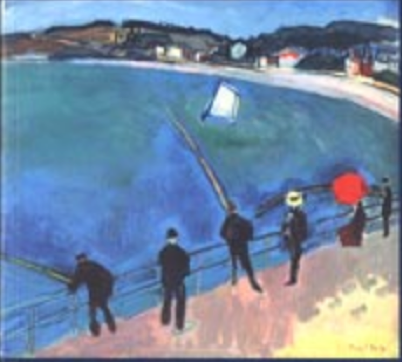
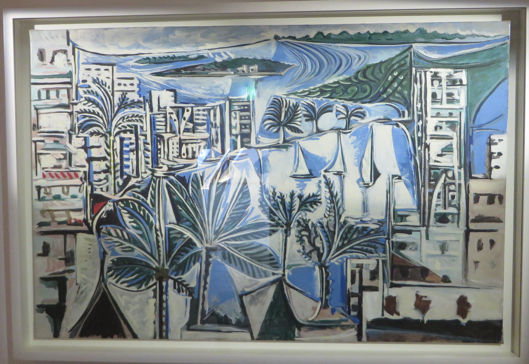
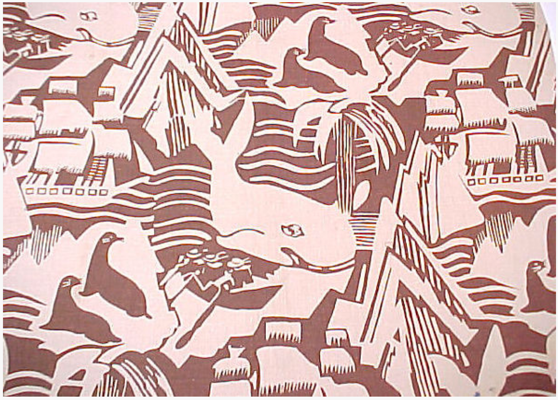
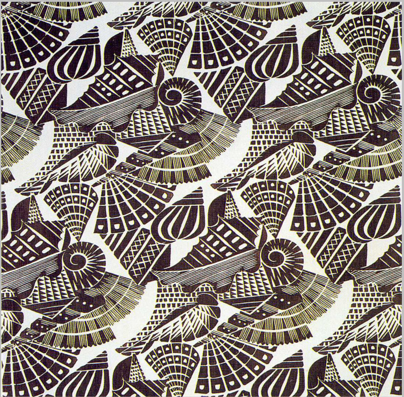
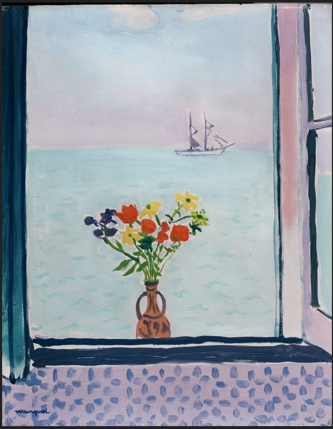
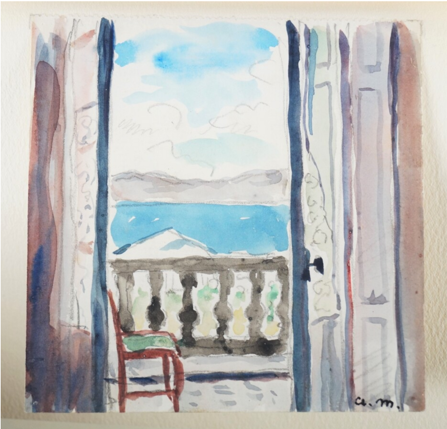
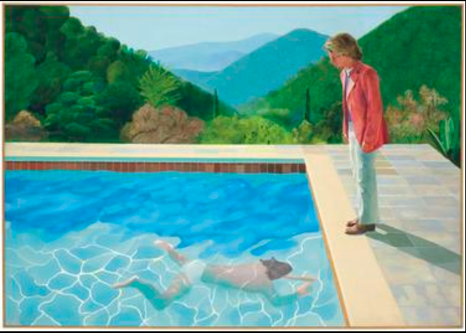
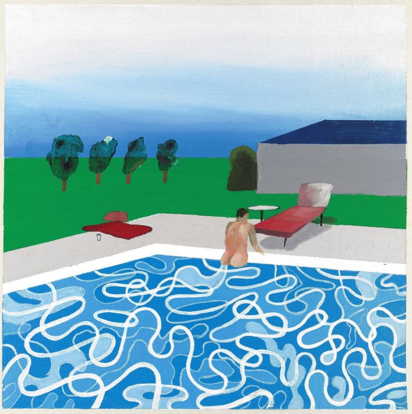
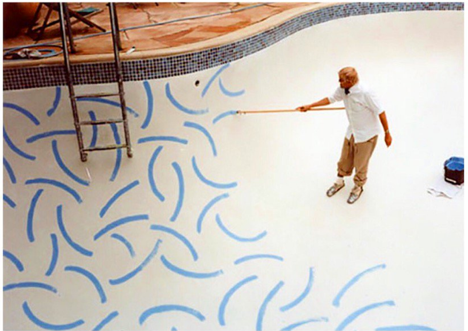
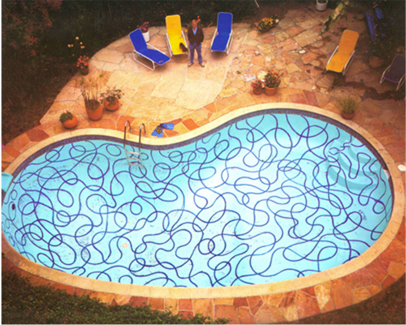
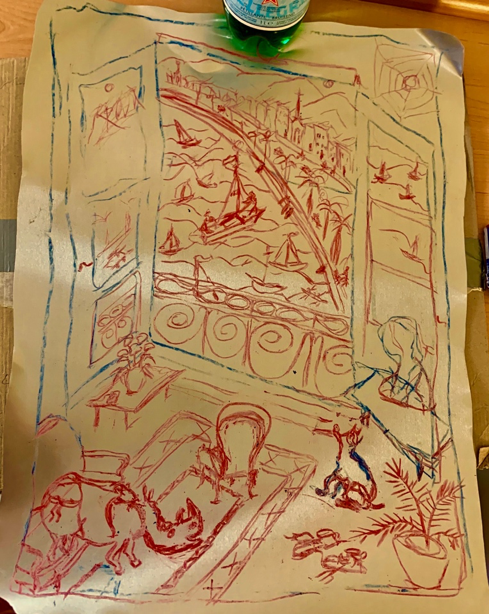
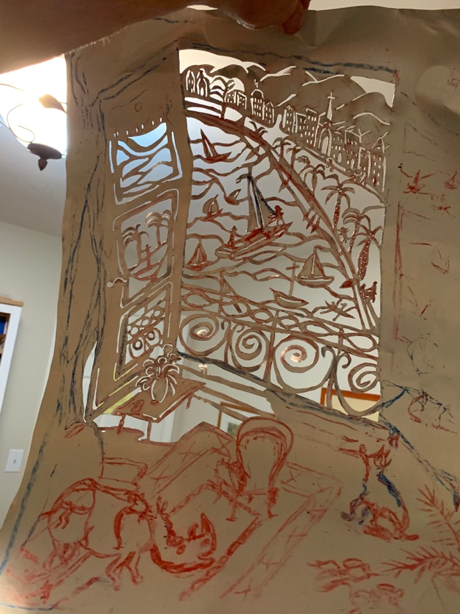
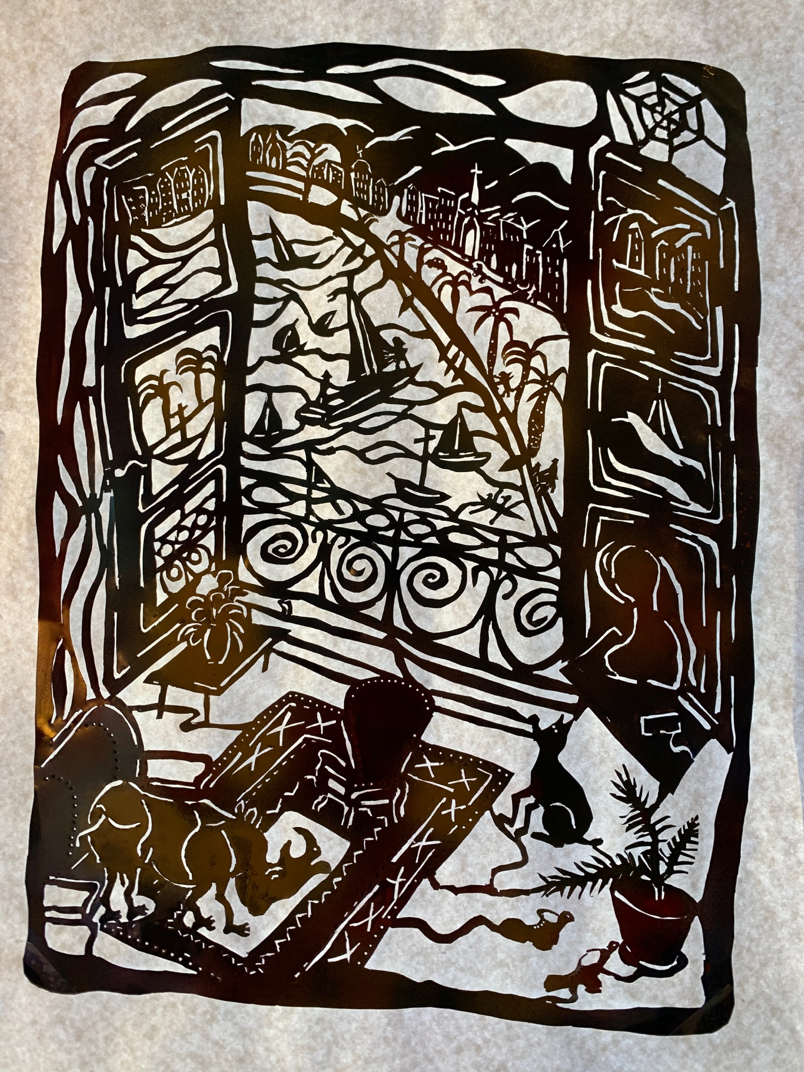
Leave a Reply